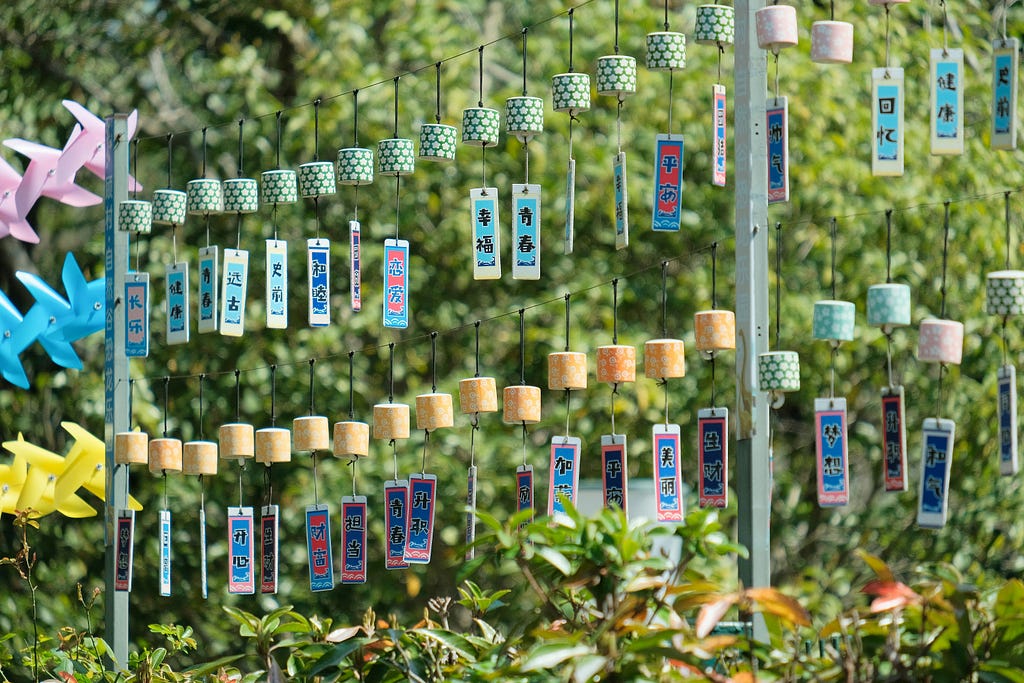Charts, Dashboards, Maps, and More: Data Visualization in the Spotlight
Feeling inspired to write your first TDS post? We’re always open to contributions from new authors.Buzzwords and trends come and go, but the core task of telling compelling stories with data remains one of the main pillars in data scientists’ daily workflow. For practitioners who’d like to up their visualization game, this week we’re highlighting some of our best recent articles on creating powerful, effective, and sleek deliverables.Our selection tackles the topic from multiple angles, so whether you’re interested in chart optimization, geospatial aids, or interactive dashboards, we’re sure you’ll find something here to inspire you and help you expand your current skill set. Happy tinkering!How to Make Extremely Beautiful Charts with PythonWhy settle for “meh…” when “wow!” is within reach? Ari Joury, PhD challenges us to stop settling for mediocre visualizations, shows how a few smart and focused tweaks can transform your average chart into something you can truly be proud of, and offers more than a few concrete examples (and code snippets) to make these suggestions both concrete and actionable.5 Essential Tips to Build Business Dashboards Stakeholders Love“You might be wondering, isn’t dashboarding just creating a bunch of charts? Well, Yes and No.” Yu Dong zooms in on an often-undervalued aspect of data professionals’ work, and explains why it’s time to reevaluate and streamline your approach to dashboard creation.Awesome Plotly with Code Series (Part 8): How to Balance Dominant Bar Chart CategoriesFor the past few months, Jose Parreño’s excellent series has addressed some of the main pain points of designing functional, easy-to-digest charts. His latest installment takes a close, pragmatic look at a common scenario where one category threatens to throw an entire bar chart off-balance.Photo by Wenhao Ruan on UnsplashStep-by-Step Guide for Building Bump Charts in PlotlyReady to move on from bar charts into more advanced and custom formats? Don’t miss Amanda Iglesias Moreno’s Plotly-based tutorial, which introduces a complete workflow for creating a bump chart, a more specialized visualization that is “designed to explore changes in a ranking over time” and allows us to “quickly identify trends and detect elements at the top or bottom of the ranking.”Easy Map Boundary Extraction with GeoPandasWorking with geospatial data can be very rewarding—not to mention essential in many industries—but it can also get tricky and occasionally unwieldy. Lee Vaughan’s latest Python guide brings clarity and practicality to a very common use case: extracting, measuring, and plotting country borders.A new year often brings with it a rush of excellent new writing, and so far 2025 has not disappointed on that front. Here are several recent standouts on a wide range of topics, from hands-on AI projects to the history of GPT models.What would it take for a supervised-learning model to solve a Rubik’s Cube? Daniel Warfield’s latest deep dive walks us through a fun and enlightening project.As more and more AI-generated content floods contemporary media and online spaces, Stephanie Kirmer wonders how we should assess its cultural impact—and navigate its (many) pitfalls.For a solid understanding of cutting-edge LLMs, a trip down memory lane (all the way back to the prehistoric era of 2019–2020) might be a good idea—and Shirley Li’s thorough and accessible retrospective of GPT-2 and GPT-3 offers us precisely that.If you’re in the mood for something more hands-on this week, we highly recommend Maeda Hanafi, PhD’s new guide to customizing your fine-tuning code with Hugging Face’s Transformers library.Are we approaching the point where AI might be able to reliably determine if something is funny? Vineet Upadhya’s latest article reviews recent research into this fascinating topic, including a new framework for computational humor detection.Establishing causality is a common goal for data practitioners, but that doesn’t make it any less difficult to pull off. For his debut TDS post, Rémy Garnier presents a versatile method that you can apply across a wide range of use cases.After sharing a well-received list of AI projects you can experiment with over a weekend, Shaw Talebi fleshes out the details of one of his proposed ideas: an AI-powered resume optimizer.Thank you for supporting the work of our authors! As we mentioned above, we love publishing articles from new authors, so if you’ve recently written an interesting project walkthrough, tutorial, or theoretical reflection on any of our core topics, don’t hesitate to share it with us.Until the next Variable,TDS TeamCharts, Dashboards, Maps, and More: Data Visualization in the Spotlight was originally published in Towards Data Science on Medium, where people are continuing the conversation by highlighting and responding to this story.
Feeling inspired to write your first TDS post? We’re always open to contributions from new authors.
Buzzwords and trends come and go, but the core task of telling compelling stories with data remains one of the main pillars in data scientists’ daily workflow. For practitioners who’d like to up their visualization game, this week we’re highlighting some of our best recent articles on creating powerful, effective, and sleek deliverables.
Our selection tackles the topic from multiple angles, so whether you’re interested in chart optimization, geospatial aids, or interactive dashboards, we’re sure you’ll find something here to inspire you and help you expand your current skill set. Happy tinkering!
- How to Make Extremely Beautiful Charts with Python
Why settle for “meh…” when “wow!” is within reach? Ari Joury, PhD challenges us to stop settling for mediocre visualizations, shows how a few smart and focused tweaks can transform your average chart into something you can truly be proud of, and offers more than a few concrete examples (and code snippets) to make these suggestions both concrete and actionable. - 5 Essential Tips to Build Business Dashboards Stakeholders Love
“You might be wondering, isn’t dashboarding just creating a bunch of charts? Well, Yes and No.” Yu Dong zooms in on an often-undervalued aspect of data professionals’ work, and explains why it’s time to reevaluate and streamline your approach to dashboard creation. - Awesome Plotly with Code Series (Part 8): How to Balance Dominant Bar Chart Categories
For the past few months, Jose Parreño’s excellent series has addressed some of the main pain points of designing functional, easy-to-digest charts. His latest installment takes a close, pragmatic look at a common scenario where one category threatens to throw an entire bar chart off-balance.

- Step-by-Step Guide for Building Bump Charts in Plotly
Ready to move on from bar charts into more advanced and custom formats? Don’t miss Amanda Iglesias Moreno’s Plotly-based tutorial, which introduces a complete workflow for creating a bump chart, a more specialized visualization that is “designed to explore changes in a ranking over time” and allows us to “quickly identify trends and detect elements at the top or bottom of the ranking.” - Easy Map Boundary Extraction with GeoPandas
Working with geospatial data can be very rewarding—not to mention essential in many industries—but it can also get tricky and occasionally unwieldy. Lee Vaughan’s latest Python guide brings clarity and practicality to a very common use case: extracting, measuring, and plotting country borders.
A new year often brings with it a rush of excellent new writing, and so far 2025 has not disappointed on that front. Here are several recent standouts on a wide range of topics, from hands-on AI projects to the history of GPT models.
- What would it take for a supervised-learning model to solve a Rubik’s Cube? Daniel Warfield’s latest deep dive walks us through a fun and enlightening project.
- As more and more AI-generated content floods contemporary media and online spaces, Stephanie Kirmer wonders how we should assess its cultural impact—and navigate its (many) pitfalls.
- For a solid understanding of cutting-edge LLMs, a trip down memory lane (all the way back to the prehistoric era of 2019–2020) might be a good idea—and Shirley Li’s thorough and accessible retrospective of GPT-2 and GPT-3 offers us precisely that.
- If you’re in the mood for something more hands-on this week, we highly recommend Maeda Hanafi, PhD’s new guide to customizing your fine-tuning code with Hugging Face’s Transformers library.
- Are we approaching the point where AI might be able to reliably determine if something is funny? Vineet Upadhya’s latest article reviews recent research into this fascinating topic, including a new framework for computational humor detection.
- Establishing causality is a common goal for data practitioners, but that doesn’t make it any less difficult to pull off. For his debut TDS post, Rémy Garnier presents a versatile method that you can apply across a wide range of use cases.
- After sharing a well-received list of AI projects you can experiment with over a weekend, Shaw Talebi fleshes out the details of one of his proposed ideas: an AI-powered resume optimizer.
Thank you for supporting the work of our authors! As we mentioned above, we love publishing articles from new authors, so if you’ve recently written an interesting project walkthrough, tutorial, or theoretical reflection on any of our core topics, don’t hesitate to share it with us.
Until the next Variable,
TDS Team
Charts, Dashboards, Maps, and More: Data Visualization in the Spotlight was originally published in Towards Data Science on Medium, where people are continuing the conversation by highlighting and responding to this story.


 Editor-Admin
Editor-Admin 





